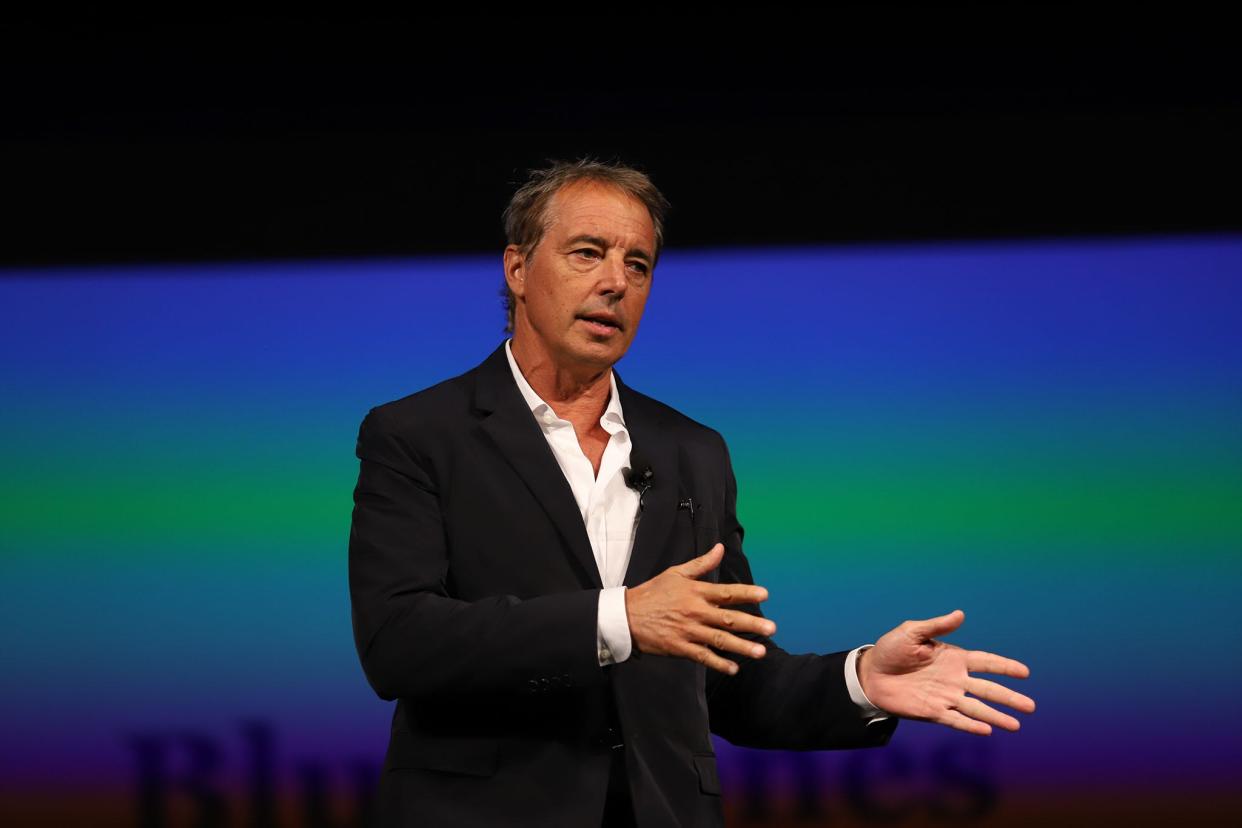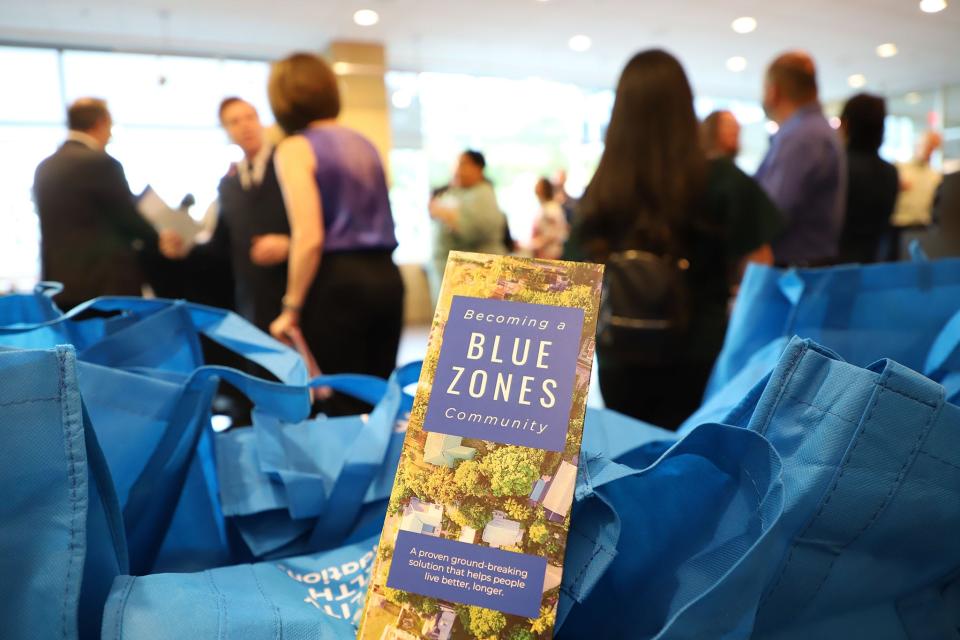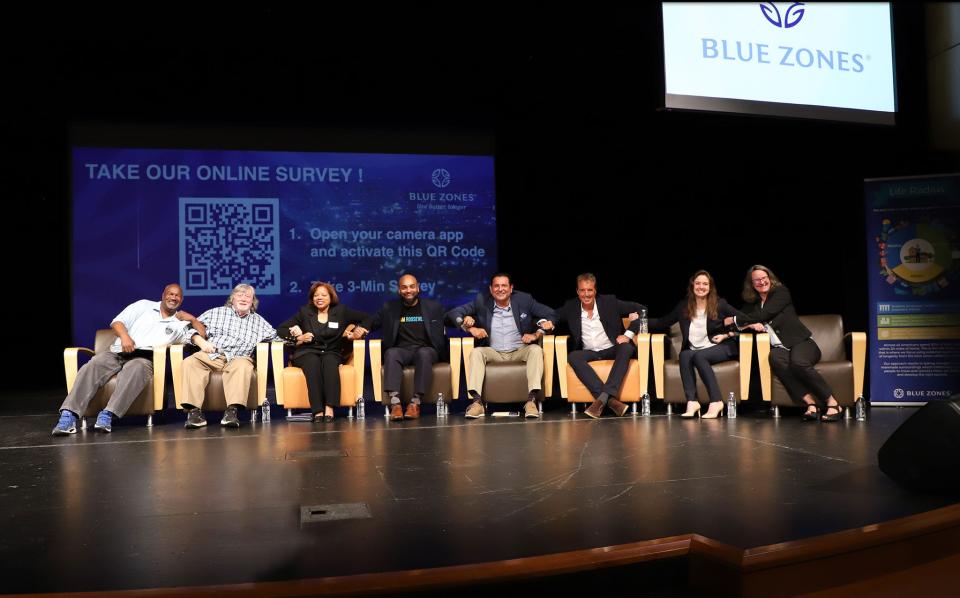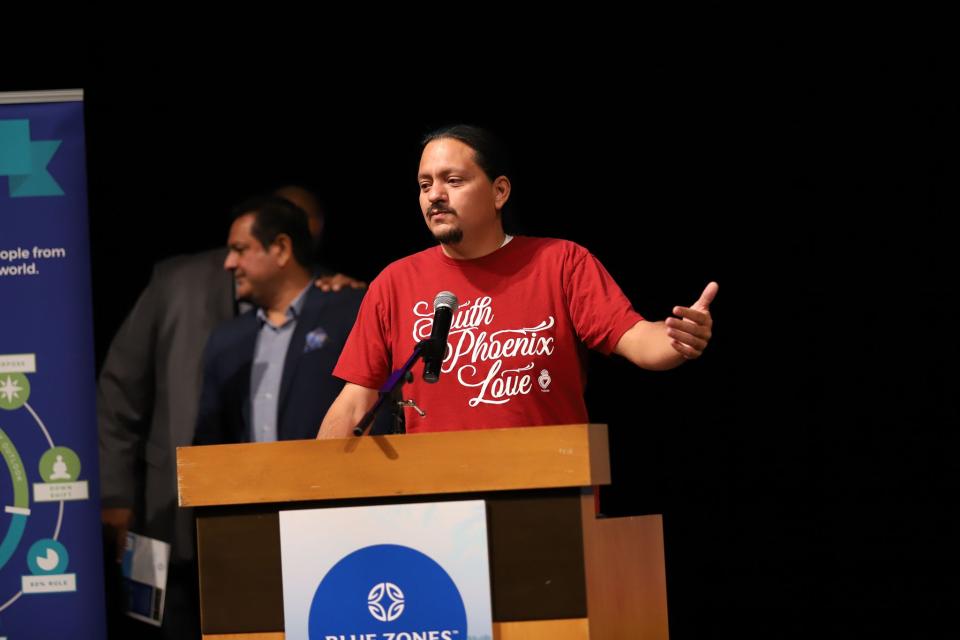Blue Zones community health project aims to increase life expectancy in south Phoenix

It is believed that five communities in the world have the highest concentration of long-lived people. But is there a way to harness their lifestyle to benefit communities elsewhere?
Blue Zones, a health initiative that aims to help shape lived environments in communities around the U.S., has arrived in south Phoenix and promises to do just that. The project is an effort supported by several local organizations to address the social aspects of health in underserved communities after the COVID-19 pandemic.
In some ZIP codes in south Phoenix, the life expectancy is 14 years less than in other communities in Phoenix. Health centers, healthy food stores, community spaces and green spaces haven't been prioritized by the city and developers despite resident requests.
Residents have long condemned the city for leaving plans for the community “sitting on shelves” instead of being put into effect.
The Blue Zones initiative has many wondering if it will be more of the same, grassroots organizers told community partners during the initial listening sessions of the project.
“We’re not going to be just like any other organization that says, ‘This is what’s wrong with south Phoenix and we’re going to fix you and eventually everything is going to be OK,’” said Tomas Leon, CEO of Equality Health Foundation. “This will fail before it even starts if we go about it like that.”
What are Blue Zones?
There are five original Blue Zones that are said to have some of the highest concentrations of people living longer lives – Sardinia, Italy; Nicoya, Costa Rica; Icaria, Greece; Okinawa, Japan, and Loma Linda, California.
The concept started in Sardinia based on demographic work from Gianni Pes and Michel Poulain in the Journal of Experimental Gerontology. The name of the project comes from the blue concentric circles drawn in Pes and Poulain's demography work that highlighted villages with longer lifespans.
National Geographic fellow and Blue Zones founder Dan Buettner took it from there and found the four other communities designated as Blue Zones. Buettner and a team of demographers wanted to find out if these communities had common factors leading to longer lives. They developed the concept of the “power nine,” which are nine factors that overlap in all these communities that appear to help with their longevity. They are:
An environment that naturally encourages them to move more
A sense of purpose in their lives
Downtime to unwind from the day
The 80% rule, or stopping eating when their stomachs are 80% full
A predominantly plant-based diet, with small servings of meat served occasionally
Moderate drinking and social happy hours
Belonging to a faith-based organization
Putting loved ones first
Having a strong social circle
But Blue Zones representatives say their goal is not to give people specific diets or bring individual solutions. Rather, they advocate for changes to people’s physical environments through policy change, funding existing efforts and a holistic look at a community’s overall health.
“The thing is we don’t focus on individual behavior changes,” said Naomi Imatome-Yun, director of editorial and media operations at Blue Zones. “None of these people in Blue Zones ever dieted or were trying to do exercise every day. It was their environment nudging them to do these things every day.”

Why is Blue Zones coming to south Phoenix?
The arrival of the Blue Zones project is the culmination of an effort between community sponsors Equality Health Foundation, Valley of the Sun United Way, United Healthcare Community Plan of Arizona and Herozona.
“We had to shift focus on disparities in testing and vaccination for these communities,” Leon said. “Now that we’re toward the end of this phase of the pandemic, we’re trying to figure out how we can go back to these communities hardest hit and focus on their recovery.”
Although Equality Health Foundation spearheaded the initiative and vetted the project, co-sponsors such as Valley of the Sun United Way were also looking for ways to branch out and serve health needs in the community. United Way recently released its Mighty Change 2026 agenda. It was the first time the organization added health goals to its platform and thought Blue Zones was a way to reach their specific goals, like improving access to health centers and boosting third-grade literacy levels.
“It really focuses on the social determinants of health, not just someone’s temperature or when they last went to the doctor,” said Carla Vargas Jasa, president and CEO of Valley of the Sun United Way. “It looks at housing and whether people have food in their stomachs.”
The Blue Zones project has attracted support from city officials and local nonprofits and companies alike, including District 8 Councilmember Carlos Garcia, David Chapman of Tiger Mountain Foundation, Arizona Rep. Reginald Bolding, County Supervisor Steve Gallardo, Vitalyst Health Foundation and APS.
At the Blue Zones kickoff event on March 28 at the Salvation Army Ray and Joan Kroc Center in south Phoenix, Garcia said that disparities in south Phoenix have been shaped by the experiences of people of color for hundreds of years and hoped that this opportunity would bring the community together to address it.
“There’s a historical reason why south Phoenix is where it’s at. There’s a reason that below the I-17, our life expectancy is 10 years less,” he said. “Some of it is historical – colonization, slavery and the exploitation of south Phoenix. This is an opportunity for those who were exploited to build up their communities.”

What is the first step for Blue Zones?
Representatives of several community groups told the Arizona Republic expressed concern about the sustainability of the project and if it was the right fit for south Phoenix.
There are still many unknowns as Blue Zones representatives gather information and community input over the next few months before offering recommendations.
The project is currently in its “community readiness assessment” phase, where Blue Zones representatives learn more about the community and determine any potential roadblocks to plans and applicable policy changes. Three members of the Equality Health Foundation staff, analysts and a dozen community health experts from Blue Zones are working on the assessment phase, with another dozen community leaders on the project's steering committee. The team has talked to more than 500 community leaders and residents so far, according to Leon.
Most community leaders and residents were not consulted before inviting Blue Zones into south Phoenix. But Leon said he and the other partners will continue to support the project even after Blue Zones leave.
Leon cited 70 other cities that saw results from the initiative such as lower smoking rates in California’s beach cities and millions in grant funding for future projects in Fort Worth, Texas.
He said the nonprofits involved in bringing the initiative to the community will be responsible for maintaining the project in the long term.
“Equality Health has demonstrated our commitment over the years, and we want to rally the community to get behind south Phoenix in this long-term transformation process,” he said. “These are organizations that have been here and done a lot for the community. This creates a high level of accountability for us to do what we say we’re going to do. This is a five- to 10-year project, and we have the capacity to sustain it in the long term.”

What recommendations are likely to emerge?
In its simplest terms, Blue Zones attempts to make the healthy choice the easiest choice. In other communities, that has manifested in bus lines helping people in underserved communities get to more educational opportunities, pedestrian-friendly infrastructure and schools offering healthier meals. All facets of a community must be in sync, Imatome-Yun said. For example, children may be eating healthy meals at home, but if chips and soda are readily available at school, it can undo the efforts being done at home.
Community engagement and relationships with people on every level of the process – from parents, children, grassroots leaders and policymakers – will be what determines success, said Punam Ohri-Vachaspati, professor of nutrition at the College of Health Solutions at Arizona State University. Human behavior is complex, and sometimes the issue with encouraging healthier behaviors boils down to a very specific issue that requires vigorous engagement to uncover, and not everyone benefits from policies uniformly.
“When you look at the evidence with putting a supermarket in a region, for example, sometimes it works and sometimes it doesn’t work, because not everyone will benefit equally,” Ohri-Vachaspati said. “The work being done right now is revealing that it’s not just socioeconomic factors. It’s more than that. People may have certain advantages and disadvantages, and income is just one of them.”
Leon said the “seeds are planted” in south Phoenix already in places like community food gardens, pantries and proposals the community already has raised about zoning and pedestrian-friendly infrastructure such as bike lanes and shade structures. He hopes to get residents excited about the project and its future.
“We want to not only use best practices but innovation strategies coming directly from the community,” Leon said. “What we’d like to see is these interventions becoming permanent changes.”
Megan Taros covers south Phoenix for The Arizona Republic. Have a tip? Reach her at mtaros@gannett.com or on Twitter @megataros. Her coverage is supported by Report for America and a grant from the Vitalyst Health Foundation.
Support local journalism. Subscribe to azcentral.com today.
This article originally appeared on Arizona Republic: Blue Zones health project aims to raise life expectancy in south Phoenix

